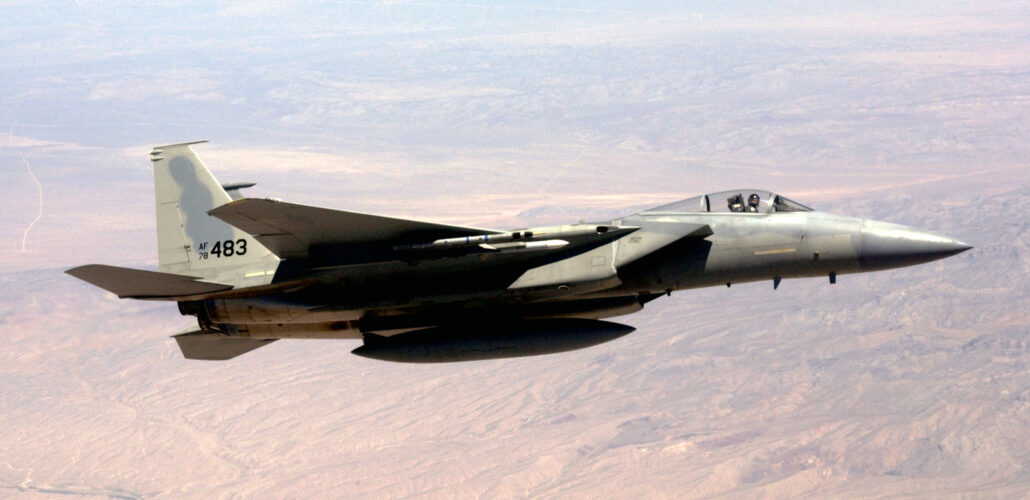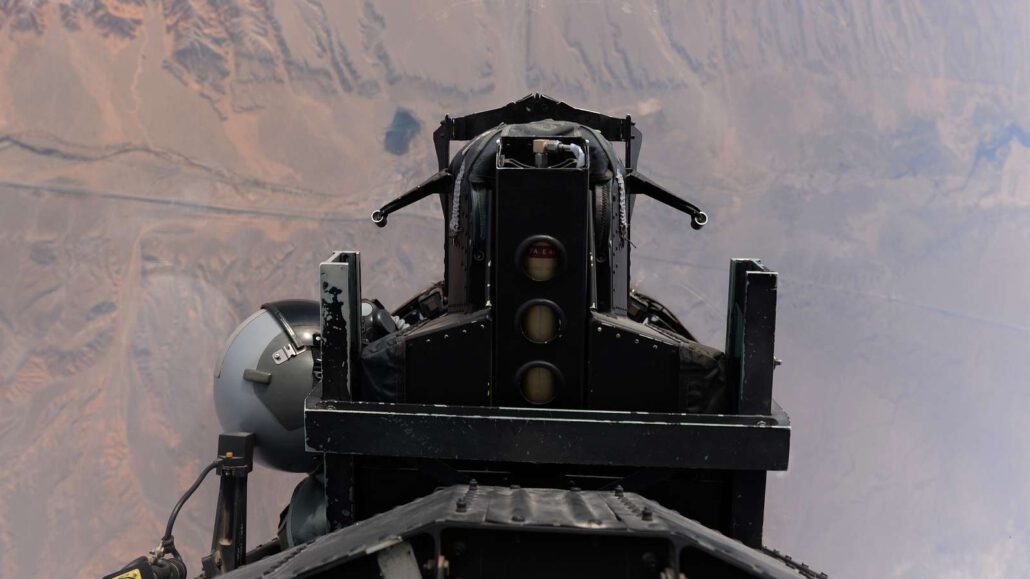
Eagle History
The 433rd Weapons Squadron began providing advanced instructor training to experienced F-15 pilots on 3 January 1978 as the 433rd Fighter Weapons School. On 1 June 1981, the 433 FWS was deactivated and re-designated as the USAF Fighter Weapons School F-15 Division. On 3 February 2003, the unit was re-designated the 433rd Weapons Squadron.
Despite changes in name, the 433 WPS has held fast to the tradition of producing the world’s greatest air supremacy pilots. To date, the 433 WPS has graduated 424 F-15C patch wearers who have helped preserve the Eagle’s undefeated record in combat, ensuring U.S. air superiority over the past 30 years. Twelve F-15C Weapons School graduates have accounted for 18 of the 38 USAF F-15C air-to-air victories.

——————————————————————————————–
Official Air Force news publication;
01/16/2008 – NELLIS AIR FORCE BASE, Nev. — More than two months after a Missouri Air National Guard F-15C broke up in mid-flight, the first F-15 A-D models returned to the air Jan. 9 at Nellis AFB after Air Combat Command commander, Gen. John D. W. Corley, ordered 60 percent of the Air Force’s A-D model’s to return to flying status.
After thorough inspection by the 57th Equipment Maintenance Squadron, Non-Destructive Inspection Lab, 13 of the 25 F-15 A-D model aircraft have been cleared to fly.
The remaining 12 aircraft, which come from various units across the base, will remain grounded until further notice.
The first Nellis pilot in the air was Lt. Col. Gary “Tonka” Rose, 433rd Weapons Squadron (F-15C) director of operations, who took off from the Nellis flightline three minutes after the 6:52 a.m. Las Vegas sunrise.
“Being the first pilot in the air was complete luck of the draw–any of our squadron pilots were qualified to fly the first sortie,” Colonel Rose said.
Squadron sorties were dedicated to regaining landing currency and demanding mission currency, which most pilots lost during the two-month F-15A-D stand down.
Four of the pilots from the 433rd WPS, including Colonel Rose, still had remaining proficiency to fly, so when the green flag was given for the eagles to fly, the WPS pilots returned to the air and conducted basic fighter maneuver engagements.
In these one-on-one sorties, pilots push their aircraft to its limits to defeat an adversary in mock air-to-air combat, said Colonel Rose.
During the grounding, the 433rd WPS was able to graduate six weapons officers from class 07B, but they were unable to complete all portions of the course, including Mission Employment and Dissimilar Air Combat Training.
“To make up for the lost flight-time, The 433rd WPS executed short-notice temporary duty assignments to accomplish large force exercises in the distributed mission operations facilities at both Eglin AFB, Fla., and Langley AFB, Va., as well as completing the academics portion of the course,” “Tonka” continued.
To get through this time using limited resources while still completing the mission, various units are banning together.
“This is one of the most difficult challenges we are facing. Currently we are working with the 422nd Test and Evaluation Squadron and 65th Aggressor Squadron to combine resources so we may accomplish various, extremely important missions,” he continued.
The 57th Wing maintenance professionals are working hard to keep the limited number of F-15s at Nellis in the air, Colonel Rose said.
Squadron photos









